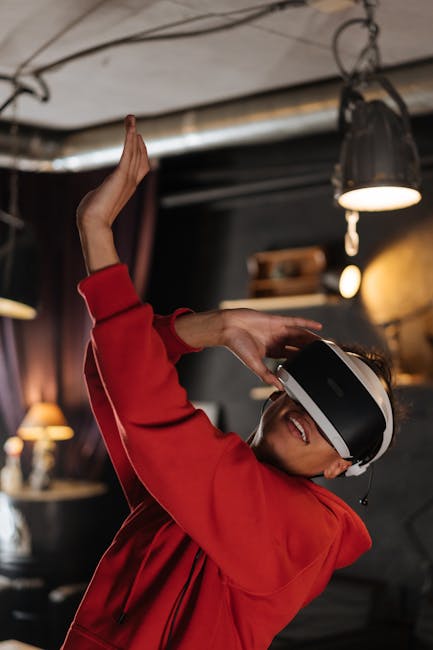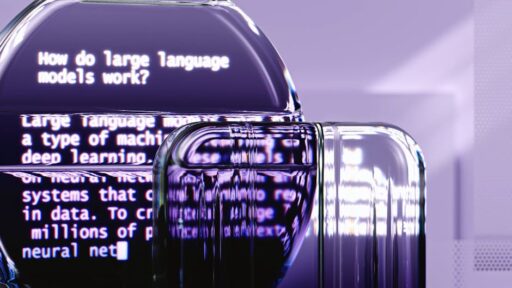Personal AI Twins: Building a Digital Legacy with Uare.ai
After three decades leading a pioneering web-chat company, entrepreneur Robert LoCascio launched a new venture to push generative AI toward a different goal: faithfully preserving an individual’s voice, memories and decision-making style. The company—originally focused on legacy preservation—has rebranded as Uare.ai and secured seed funding to expand that effort into a broader platform for personal and professional digital twins.
What is Uare.ai and why it matters
Uare.ai creates what it calls a Human Life Model (HLM): a personalized AI built only from an individual’s own data. Rather than relying on broad, generalized LLM datasets, HLMs are trained to capture a single person’s life story, values, and professional knowledge so the resulting model behaves like a digital replica. The result is a personal AI that reflects an individual’s language, priorities and expertise.
This shift matters for two core reasons:
- Ownership and control: Models are based on a person’s own material, not generalized corpora. That makes the output more representative and gives the owner clearer rights over the model’s content.
- Utility beyond memorialization: While initial use cases focused on legacy—preserving voice and stories for loved ones—HLMs can also serve creators, professionals and small teams by automating content, supporting customer interactions, and scaling expertise.
How does the Human Life Model (HLM) work?
HLMs combine structured personal facts with narrative input collected through text, voice and video. The platform walks users through prompts that elicit key memories and professional details, then blends those facts with the human life story to synthesize a model that mirrors how the person would think and respond.
Training inputs
Typical inputs for an HLM include:
- Recorded conversations and voice samples
- Written recollections and autobiographical notes
- Professional documentation and work history
- Values and decision-making examples (crossroads, moral choices, mentorship stories)
- Multimedia such as photos or short video narratives
Design principles
Uare.ai’s approach centers on:
- Privacy: Only personal data is used to create the HLM; the system avoids filling gaps with general LLM knowledge.
- Fidelity: The model aims to reproduce the individual’s tone, priorities and expertise—not generic persuasion or invented facts.
- Transparency: If the model lacks knowledge, it is designed to say so rather than fabricate an answer.
What is a personal AI twin and how does it work?
(Featured-snippet friendly)
A personal AI twin is a digital model trained on an individual’s unique data—stories, voice, documents and professional work—so it can respond, create content, or represent their expertise in conversations. It works by collecting structured facts and narrative inputs, training a model that prioritizes that material, and exposing interfaces for text, voice or automated tasks while preserving data ownership and consent.
Real-world use cases: legacy, creators and professionals
HLM-based personal AIs were initially popular as a form of digital legacy—letting friends and family interact with a preserved personal voice after death. But demand quickly grew from people who wanted to leverage their model while alive. Key use cases include:
- Legacy preservation: Capturing family stories and voice to leave a living record for future generations.
- Content creation: Using a personal AI to scale writing, podcast scripting, or social media output that sounds authentically like the creator.
- Customer and client interfaces: Deploying a digital expert to answer routine questions, freeing the human to handle higher-value tasks (connects to enterprise AI transformation strategies).
- Knowledge transfer: Turning years of professional experience into a consultative assistant that helps juniors and clients access expertise on demand.
These applications align with broader industry shifts such as enterprise adoption of AI assistants and the increasing emphasis on quality, personal data for model building. For deeper context on AI in business workflows, see our coverage of AI in enterprise and how companies are realizing ROI from automation.
How to create your own personal AI: step-by-step
Creating an HLM or personal AI typically involves the following steps:
- Sign up and verify identity, establishing ownership and consent.
- Provide autobiographical prompts: childhood memories, turning points, values and favorite stories.
- Upload factual artifacts: resumes, publications, emails or portfolios that capture expertise.
- Record voice and optional video samples to model tone and cadence.
- Review draft outputs, correct inaccuracies, and add clarifications.
- Choose how to deploy: private legacy archive, content assistant, or public-facing digital specialist.
This workflow highlights why high-quality, well-curated input data matters. Strong, structured personal data produces more reliable models—an issue we’ve analyzed in depth in our look at data quality for AI.
Business model and monetization
Platforms that enable personal AI twins typically pursue a mix of revenue streams:
- Subscriptions: Individuals or professionals subscribe for storage, model hosting and API access.
- Revenue share: If a digital twin generates income—such as paid consultations or content—the platform may take a percentage.
- Enterprise licensing: Businesses pay for tools that let employees package and deploy their expertise across teams.
These choices reflect a larger market for creator tools and professional automation. By enabling professionals to capture and scale their knowledge, personal AI models can create new income streams while preserving control and provenance of the underlying data.
Privacy, ownership and ethical considerations
Personal AI raises a set of legal and ethical questions that builders and users must address:
Ownership and consent
Users must have clear ownership rights to the model and to the data that powers it. Consent mechanisms should be explicit, revocable and auditable so people understand how their information will be used and who can access the resulting model.
Accuracy and hallucination
Because HLMs deliberately avoid backfilling with general knowledge, they are designed to decline answering when outside their scope. That reduces the risk of fabricated answers but places importance on clear UI signals when a model is uncertain.
Posthumous use and family dynamics
Digital replicas used as memorials can complicate grieving and legacy narratives. Platforms should provide guardianship controls, moderation tools and clear policies for posthumous access that respect family wishes and legal frameworks.
Regulation and compliance
As laws evolve around data protection, likeness rights and AI-generated content, platforms must adapt to ensure compliance. Expect increasing scrutiny on how personal data is collected, stored and monetized.
How personal AIs will reshape professional workflows
Personal AI twins have practical implications for how professionals work. Imagine a CPA, consultant or therapist who can clone routine decision-making and knowledge into an assistant that drafts reports, triages client requests, and synthesizes research. That scenario accelerates productivity but also creates new responsibilities for quality control and client disclosure.
Enterprises will need policies around when a human signs off on AI-generated work, how models are audited for accuracy, and how employees are compensated for their intellectual contributions to models—issues related to the larger debates on AI infrastructure and costs.
For examples of enterprise adoption patterns and automation ROI, refer to our analysis of AI in enterprise and the ways companies scale assistants across teams.
Potential risks and how to mitigate them
Key risks include misinformation, misuse of likeness, data breaches and social harms. Mitigation strategies include:
- Strict access controls and encryption for stored personal data.
- Human-in-the-loop review for any critical or published outputs.
- Transparent provenance tags indicating when content is AI-generated.
- Clear legal agreements about monetization, licensing and posthumous rights.
These measures align with broader best practices in AI development and data stewardship. We also recommend integrating personal models into organizational security audits and ensuring legal teams review likeness and IP policies.
Where the technology goes next
Personal AI twins are likely to evolve in three directions:
- Better multimodal fidelity: Improved voice cloning, video understanding and situational memory will make replicas more realistic and useful.
- Tools for creators: Creator-focused workflows will let writers, podcasters and educators monetize voice-aligned content at scale.
- Enterprise knowledge networks: Aggregated personal models could form verified knowledge graphs for organizations—when done with consent and governance.
Developers and leaders who prioritize data quality and ethical guardrails will have an advantage. If you’re exploring how to productize knowledge and expertise, our reporting on high-quality data and AI-driven customer support provides practical context for building responsible systems.
Is a personal AI right for you?
Consider a personal AI if you want to:
- Preserve family stories, voice and values for future generations.
- Scale your professional expertise without losing authenticity.
- Automate time-consuming content and client workflows while retaining personal style.
If privacy, consent and legal clarity are priorities—and you’re willing to invest time in high-quality inputs—a personal AI can deliver meaningful benefits. For organizations, pilot programs with a handful of consenting professionals are a low-risk way to evaluate productivity gains.
Final thoughts and next steps
Personal AI twins represent a meaningful intersection of legacy, creativity and automation. Platforms that emphasize data ownership, transparency, and fidelity will help people preserve what matters most: voice, expertise and the nuanced stories that make us unique. As the space matures, expect new tools that make it easier for creators and professionals to train, monetize and manage their digital selves.
Ready to learn more about building a personal AI or preserving your life story? Sign up for platform updates, start collecting your memories, and consider which parts of your knowledge you’d like to scale first. If you’re an enterprise leader, pilot a personal-AI program with a small, governed cohort to measure impact before broad rollout.
Call to action: Preserve your voice, scale your expertise, and shape your digital legacy—subscribe for updates and early access to personal AI tools from Uare.ai.





